Jury Member Women Artists Art Exhibition 2024

Shobha Broota
Shobha Broota is a renowned Indian artist known for her meditative and abstract works, deeply influenced by classical Indian music. Trained as a classical vocalist before studying fine art, Broota’s art “aspires to the condition of music,” blending tranquility, rhythm, and subtle movement. Her canvases, often characterized by minimal use of colour and intricate textures, evoke a serene and reflective atmosphere, akin to the meditative quality of raags.
Broota began her career with portraits and printmaking, exploring woodcuts and etchings in the ’70s and ’80s. Over time, she transitioned into creating abstract oil and acrylic paintings and relief works incorporating fabric, thread, and wool, forming intricate patterns and grids. These recent works further express her philosophy of meditation, where the act of creation itself is a spiritual practice.
She has exhibited extensively in India and internationally, with her works held in prominent national galleries and private collections, including in India and Malaysia. Broota’s contributions to the art world have been recognized through prestigious fellowships from the Government of India and Sahitya Kala Parishad, as well as awards from the All India Fine Arts and Crafts Society (1982) and Sahitya Kala Parishad (1986). She is also the co-author of Vesture of Being, a book on her paintings.
Broota lives and works in New Delhi, where her art continues to evolve, exploring new mediums and spiritual themes.
Prem Singh
Prem Singh is a celebrated Indian artist whose works draw deep inspiration from the natural world. A former Principal of the College of Art, Chandigarh, and an ex-member of the Advisory Committee of the National Gallery of Modern Art, New Delhi, Singh’s art reflects a profound dialogue with nature. His paintings are imbued with lyrical designs and patterns, capturing the silent, transformative activity of the natural world. He describes his creative process as a meditative exchange with the manifest and unmanifest elements of nature, where his entire being is immersed in the moment.
Singh’s work is characterized by an organic, rhythmic quality, capturing the subtle nuances of life and light through lines, forms, and colours. He seeks to evoke a transcendent experience, inspired by the chirping of birds at dawn, the music of light, and the eternal silence of nature. His artistic journey is a quest to “grasp” the joy and vitality of life in its fleeting moments.
A recipient of numerous awards, including the Lalit Kala Akademi Triennale India International Award in 1994, Singh has held 25 solo shows and participated in major national and international exhibitions. His works are part of prestigious collections, including the National Gallery of Modern Art, Lalit Kala Akademi, and the Government Museum Chandigarh.

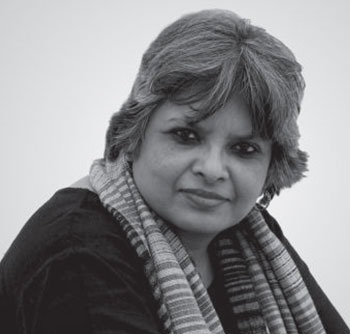
Shukla Sawant
Shukla Sawant is a prominent contemporary multimedia artist and academic whose work engages deeply with themes of appropriation, cultural translocation, and the fluidity of artistic boundaries. With a background in painting, printmaking, and photography, her practice explores the intersection of the original and its multiples, using these concepts to challenge hierarchical distinctions in art. Sawant’s artistic vision draws on her belief that cultural expression cannot exist in isolation, but is rather shaped by technological, social, and global influences.
Sawant studied fine arts at the Delhi College of Art and later specialized in lithography at the Ecole Nationale Supérieure des Beaux Arts in Paris. She earned two Master’s degrees, one from the College of Art, New Delhi, and another from the Slade School of Art in London. In 2015, she completed her PhD at Jawaharlal Nehru University (JNU), where she is currently a professor at the School of Arts & Aesthetics.
Sawant’s work includes printmaking, sculpture, and multimedia installations, often layered with sound, and has been shown internationally at venues such as the Ljubljana Biennale and the Bradford Biennale. She is also a founder of the Indian Printmakers Guild and has contributed extensively to the art community through initiatives like KHOJ. Sawant’s publications include significant contributions to South Asian modernism and postcolonial art theory.
Surjeet Akre
Surjit Akre is a distinguished Indian painter and the first Indian artist to earn a postgraduate degree in easel painting from the prestigious Repin Institute of Painting, Sculpture & Architecture, St. Petersburg, Russia. Throughout her career, she has been recognized for her mastery of figurative art, earning numerous awards, including the Senior and Junior Fellowships from the Government of India and the prestigious Friendship Medal from the Russian Centre for Scientific and Cultural Cooperation in Moscow.
Akre’s work reflects her deep engagement with life’s complexities, portraying themes of love, struggle, suffering, and dreams through a range of mediums, primarily oil on canvas. She has developed a unique style over decades of practice, with a focus on creating textured, evocative depictions of genre people and autobiographical narratives. Her notable series include Mother & Child, War & Peace, Desire, Prakriti, and Terrorism, among others.
A prolific artist, Akre has held 44 solo exhibitions across India, Russia, the USA, and Canada, and has curated over 200 exhibitions, fostering cultural exchange between Indian and Russian artists. She is also the founder of Roerich’s Art Society, affiliated with the Russian Cultural Centre in New Delhi. Her works are featured in private collections and public institutions worldwide.
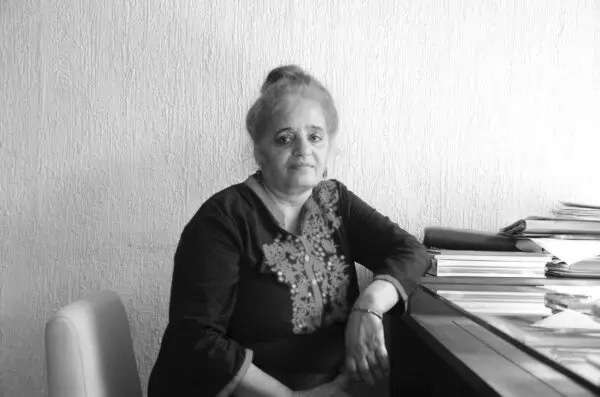
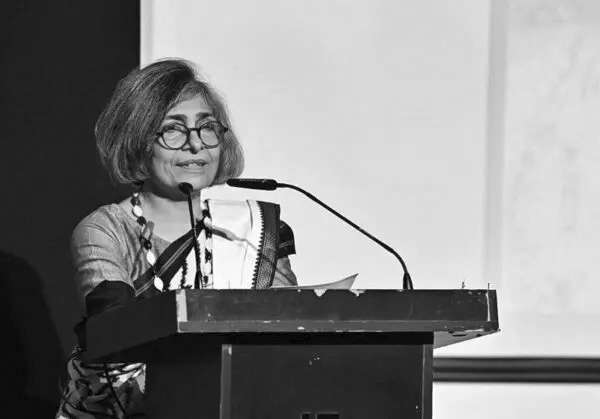
Parul Dave-Mukherji
Parul Dave-Mukherji is a Professor at the School of Arts and Aesthetics at Jawaharlal Nehru University, New Delhi, and a leading scholar in global art history and contemporary Asian art. She holds a PhD in Indology from Oxford University, where she worked on a critical edition of The Citrasutra of the Visnudharmottara Purana. Her research interests encompass global art history, comparative aesthetics, and the intersection of art theory with globalization.
Dave-Mukherji has authored and co-edited several influential publications, including Towards a New Art History: Studies in Indian Art (2003), InFlux: Contemporary Art in Asia (2013), and Arts and Aesthetics in a Globalizing World (2014). Her scholarly work engages with the complexities of art history in the context of globalization and postcolonial theory, focusing on topics such as the representation of love, lineage, and identity in Indian art.
A recipient of the British Academy award in 2011, she has lectured internationally and contributed to major journals such as the Journal of World Art and Journal of Contemporary Thought. She was a member of the executive committee of the International Association of Aesthetics and is currently focused on researching the theory of performative mimesis (Anukrtivada) in the 10th-century Sanskrit commentary Abhinavabharati by Abhinavagupta. She is co-editing a major volume on 20th-century Indian art, set for release in 2021.
Kavita Nayar
Kavita Nayar, is an accomplished Indian artist known for her expertise in printmaking and experimental use of various mediums, including oil, acrylic, pastel, and watercolour. She completed her BFA at Kala Bhavana, Santiniketan, and her MFA at the College of Art, New Delhi. Nayar’s artistic journey includes prestigious international fellowships, such as the French Government scholarship for lithography and etching at the Cite International Des Arts in Paris (1985-86), and a senior fellowship at the Ruskin School of Art, Oxford (1995-96), supported by the Charles Wallace India Trust.
Her work is featured in major museum collections across India, France, Hungary, Poland, Germany, Sweden, and the United States, and in corporate collections including the Prime Minister’s House in New Delhi. Nayar has held solo exhibitions at institutions like Otterbein University, Ohio, and the Mahatma Gandhi Institute, Mauritius, and has curated printmaking exhibitions under the group Multiple Encounters.
As a prominent figure in the Indian art community, Nayar served as the Vice President of the Indian Printmaker’s Guild from 1990 to 2000 and is currently a Trustee of the Kala Sakshi Memorial Trust, which supports scholarships and mentoring for emerging fine arts students. She continues to live and work in New Delhi, where her artistic practice is shaped by emotional reflection and a rich, imaginative vision.
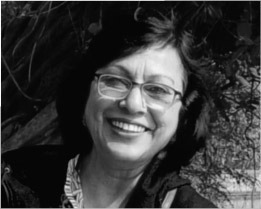

Viren Tanwar
Viren Tanwar, is a prominent artist whose works blend personal and cultural narratives with stylistic abstraction. He received his Diploma in Painting from the Government College of Art, Chandigarh, followed by advanced studies at the Slade School of Art, London, on a British Council Scholarship. Initially teaching art at a fashion design institute, he eventually shifted to full-time painting.
Tanwar’s art explores the complexities of contemporary life, combining elements of harshness and innocence. His vibrant, brightly colored canvases often feature a fusion of influences, from the spiritual depth of Ajanta murals to the intricate details of Pahari miniatures, alongside his rural Haryanvi heritage of fabric dyeing techniques such as Lahariyas and Bandhej. His work spans a range of themes, from spirituality and sexuality to religious icons and acrobats, reflecting the multifaceted nature of life.
Tanwar has been an active figure in the art community, serving as a member of the General Council and Secretary of the Lalit Kala Academy in Punjab, as well as an Associate with the North Zone Cultural Centre. His work has been exhibited in India and internationally, with shows in Mexico, Berlin, and Singapore. His awards include the All India Fine Arts and Craft Society, Kala Shree, and MS Randhawa Memorial awards.
Rajendra Agarwal
Rajendra Agarwal, is a distinguished Indian artist known for his significant contributions to contemporary Indian art. He graduated with first-class honors in Applied Art from the College of Art, New Delhi. Over the course of his career, he has held 20 solo exhibitions and participated in 125 group shows both in India and internationally, including in Belgium, Bulgaria, Cuba, Mexico, the USA, and Switzerland. Notably, he was one of 12 Indian artists selected for the prestigious “1001 Reasons to Love Earth” exhibition in Switzerland.
Agarwal’s work has been featured in major national and international exhibitions organized by institutions like the Lalit Kala Akademi, AIFACS, and Sahitya Kala Parishad. He has attended over 30 artist workshops and camps across India and abroad. His dedication to the arts has earned him numerous accolades, including the “Kala Shri” award presented by the Prime Minister of India, as well as fellowships from the Government of India.
A member of several prominent art organizations, Agarwal has served on juries for major art exhibitions and has been featured in TV films showcasing contemporary Indian art, including a BBC film. His works are housed in various prestigious collections, such as the Lalit Kala Akademi, Punjab State Art Museum, and the Museum of Fine Arts at Punjab University.
Agarwal’s travels have further enriched his artistic vision, with experiences in countries such as France, Italy, the USA, and China, among others. He continues to live and work in India.
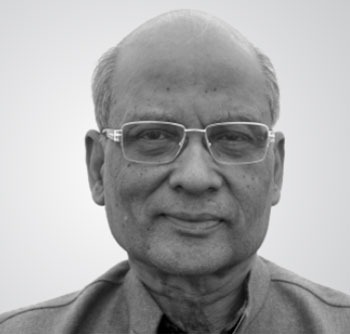
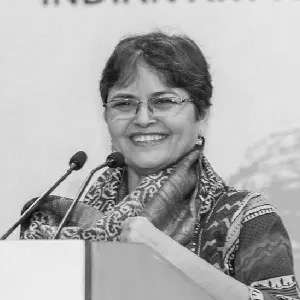
Dr. Pawan Sudhir
Dr. Pawan Sudhir is a Professor and Head of the Department of Education in Arts and Aesthetics at the National Council of Educational Research & Training (NCERT), New Delhi. With 26 years of experience in teacher education and educational administration, he has led several significant educational projects. Notably, he spearheaded the Art Integrated Learning (AIL) project, launched in 2010 in Delhi, which has since expanded to over 600 schools across multiple states. Dr. Sudhir was also a National Consultant for UNICEF on a study analyzing the education sector’s response to HIV/AIDS in India (2007-2008), funded by the World Bank.
As Project Director for the YUVA School Life-skills Education Programme (2007-2009), he published life-skills education modules and trained over 53,000 teachers in Delhi. He also served as Nodal Officer for the Teacher Development Program of the British Council India, training English teachers across government schools in Delhi.
Dr. Sudhir’s research interests lie in arts education, and he has represented India in numerous international forums, including the World Summit of the World Alliance for Arts Education (2013), and the 2nd UNESCO World Conference of Arts Education in Seoul (2010). His research has been presented in conferences in Germany, the UK, and the USA. He also published the Country Report on Arts Education in India (2010). Dr. Sudhir’s work continues to influence the integration of arts in education across India and globally.
Biman Bihari Dass
Biman Bihari Das, a renowned Indian sculptor, was awarded the Padma Shri in 2014 for his significant contributions to art. He studied at the Government College of Art & Craft, Kolkata, earning a Diploma in Modeling and Sculpture in 1966 with first-class distinction. He further pursued a course in Teachers’ Training and Art Appreciation at Calcutta University in 1967. Throughout his career, Das received several prestigious fellowships, including a Fulbright Fellowship (USA) and a UGC grant under the Indo-Hungarian cultural exchange program, which helped shape his artistic journey.
Das became the principal of the Government College of Art & Craft, Kolkata, in 1994, and later moved to New Delhi to serve as the principal of the College of Art, Delhi. He has also been the vice president of the All India Fine Arts and Crafts Society.
Known for his mastery in bronze, Das’s notable works include the ‘Naika’ or ‘Nayika’ series, which symbolize energy and growth, drawing from early Indian art and literature. His sculptures are created using a variety of materials, including marble, stone, and wood.
Das has held over 40 solo exhibitions worldwide and participated in numerous group exhibitions, including biennales in Belgium, Seoul, Moscow, and Japan. His work is part of collections in prestigious museums across the globe. In addition to the Padma Shri, he has received multiple awards, including the Kala Vibhushan (2001) and a retrospective of his work was held in 2014 in Mumbai.

